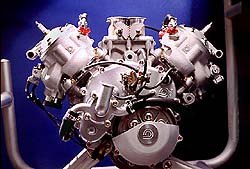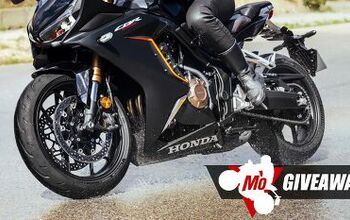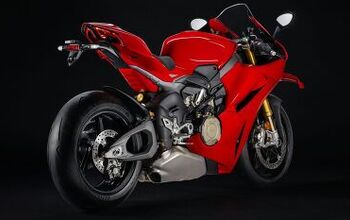1997 Bimota 500 V Due
This bike will have sport riders' pulse rates racing into overload -- before they even get into the saddle.
Early next year a milestone will be written into the history books when series production starts on the first two-stroke motorcycle in more than 10 years to meet the EPA requirements of all 50 states in the USA, and anywhere else in the world for that matter. And what a motorcycle it will be. Bimota, the constructors of the most exclusive sport bikes in the world, will unleash their 500cc two-stroke V-twin, dressed to kill in full race-tech livery. This bike will have sport riders' pulse rates racing into overload -- before they even get into the saddle. The Due will obviously be competing for the title of Ultimate Sports Machine.
Bimota has spent over six years developing this wonderful piece of machinery, not surprising since the R&D department has never had more than single figure staffing levels. Traditionally Bimota has borrowed powerplants from their Far Eastern industrial colleagues and wrapped them in exquisitely crafted frames and bodywork. Recent Bimota models have seen increasing applications of fuel injection to the engines, and this has served as the proving ground for the development of the Direct Injected two-stroke engine.
With their roots in racing, Bimota initially hoped to develop the engine for use in GPs, encouraged by the debate within the sport early in the decade about banning 4-cylinder configurations. Fortunately for all of us, the level of investment to develop a complete new bike for GP racing forced a change of direction that resulted in the imminent arrival of the street machine.
The Due will obviously be competing for the title of Ultimate Sports Machine.
Too good to be true, right? Well, just a little. Honda tried some fuel injection on their NSR500 GP machine during 1993, but it was dropped after that season. Surprisingly they chose to inject into the crankcase in a straight emulation of the operation of a carburetor, and as a result found similar performance to a carburetor. This could have been forced on them by the very short time that is available for fuel atomization in an engine turning at 13,000 rpm. Uneven or incomplete atomization would result in uneven or incomplete ignition and lower top power output. The Bimota Due has quoted maximum power develop at 9000 rpm and the difference in engine speed may be just enough to eliminate this problem. Interestingly, the new Honda NSR500 V-twin racer delivers its maximum power of 135 bhp at 10,250 rpm, pumping AVgas through conventional carburetors.
Talking to the Bimota staff at the recent IFMA show in Cologne, they made it clear they wanted to start production as soon as possible, and were hoping for an initial production run of 500 units.
Another major contribution to the clean exhaust of the Due is the use of the gearbox oil to lubricate the main bearings, rather than relying on the fuel/oil mist of regular two-strokes. Cylinder and crankshaft lubrication is still performed by two-stroke oil, flowing down small galleries into the guts of the engine. There is a two liter oil tank partition to the fuel tank that will need very infrequent topping up.
The racing heritage of the machine is obvious, with a hydraulically-actuated dry clutch and 6-speed side-loading cassette gearbox that will come in handy if you want change your gearing for your favorite set of curves. The frame follows Bimota's recent preference for oval profile alloy pipes, with an Ohlins rear shock and 46mm Paioli fully adjustable front forks. Carbon cans keep the exhaust note muted and carbon fiber is also used for the seat. Brembo discs, Antera alloy wheels and Michelin Hi-Sport radial tires complete the list of top range equipment.
Bimota has a simple slogan they claim is at the heart of all their R&D work -- Tecnologia dell'Emozione. In the 20 years since their first Kawasaki powered KB1 production bike, Bimota's motorcycles have played havoc with the emotions of the world's sport bike community. The 500cc Due proudly carries this tradition through to the closing years of the decade.
Specifications:
Engine
Result is nice clean exhausts, free of unburned hydrocarbons, and un-polluted clean fresh charge waiting for the big bang of the next ignition pulse. Two-stroke heaven.
Manufacturer: BimotaModel: 500 V due - 2 tempi Iniezone ElettronicaEngine: Liquid-cooled, Two-stroke V-twinBore x stroke: 72 x 61.25 mmDisplacement: 499 ccCompression Ratio: 12:1Carburation: Twin injectorsMax power: 110 HP @ 9,000 rpmMax torque: 9 Kgm @ 8,000 rpm
Chassis
Frame: Aluminum alloy pipes with oval cross-sectionWheelbase: 1340 mmRake: 23°Trail: 89 mmFront Brake: Brembo double discsRear Brake: single discWheels: 3.50x17 front - 5.50x17 rear
Dimensions
Max Length: 1940 mmSeat Height: 790 mmFuel Capacity: 20 LClaimed dry Weight: <150 Kg
More by Colin MacKellar, Dutch Desk































Comments
Join the conversation